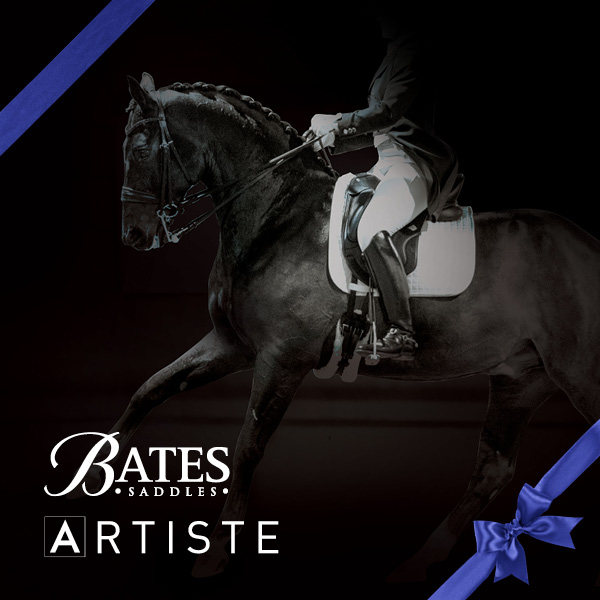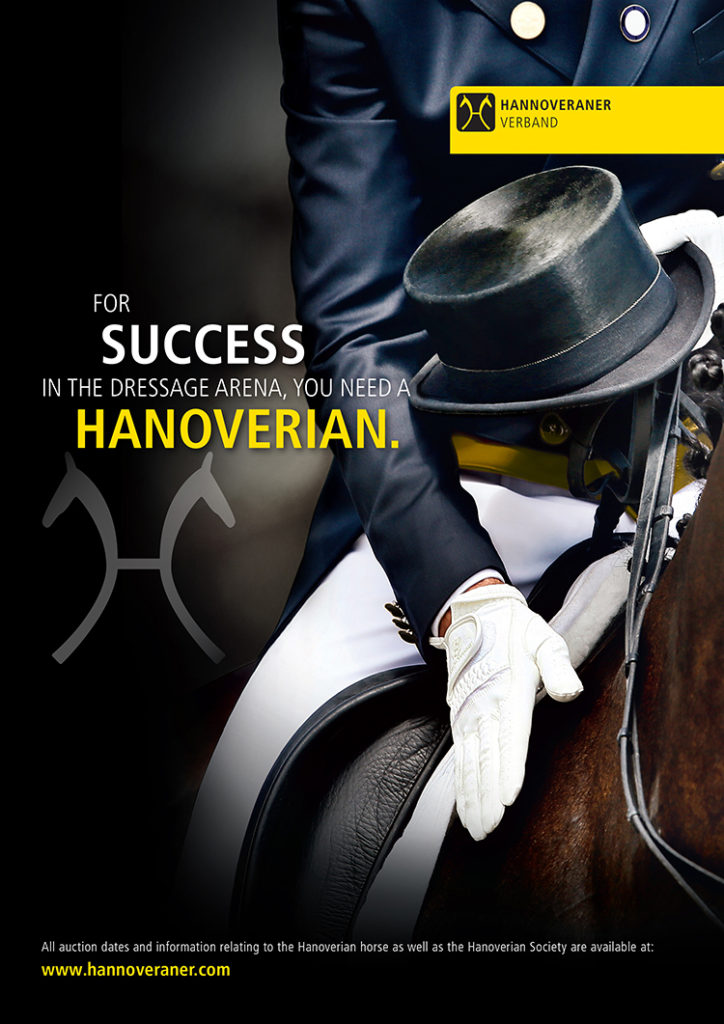In these three articles we have followed the development of San Siro, who was selected at a German auction as a two-year-old, and trained throughout his career by master horseman, Johan Hamminga and ridden by Johan’s partner, Jennifer Sekreve.
Words – Christopher Hector Photos – Roslyn Neave
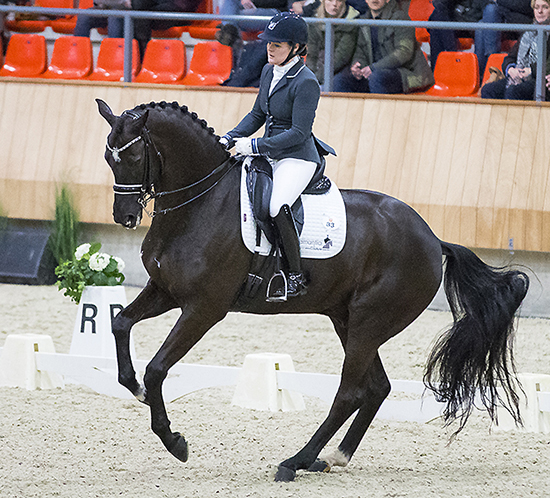
Pic DigiShots
We follow our gawky three-year-old colt all the way to Grand Prix.
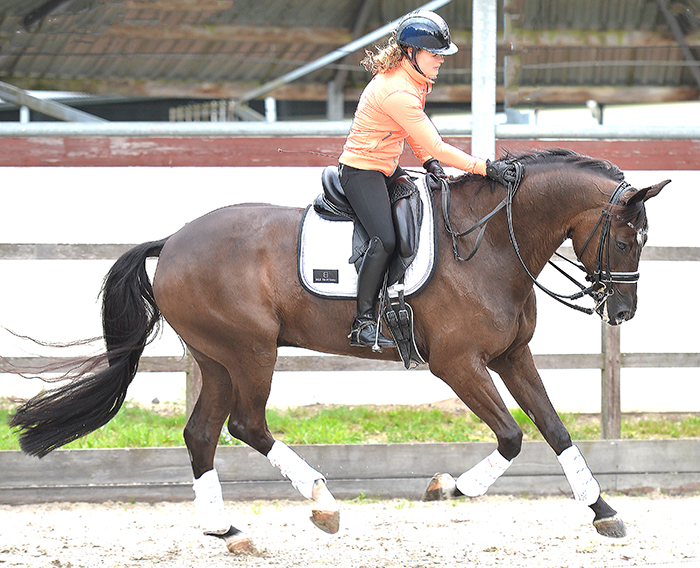
You’ve always believed in the horse…
“Exactly, he’s my friend.”
I’ve watched you work with him and Johan many times, and all the time you were identifying the areas of weakness and working on improving them…
“The looseness in his body was always something to keep in mind but he is getting stronger and better. Some horses just need time, still now, he is only ten years old, but as a young horse he wasn’t the one to do young horse competitions, he needed training, and time, and now he is there!”
What happens in the future?
“I didn’t really think a lot about it yet. This was the goal and I was really curious about how this first Grand Prix would work out. Now he has a little bit rest, I’ll take him hacking outside, then I must make a little plan, we’ll see how it turns out but in the meantime I am so proud of him, it was really cool to experience this…”
story continues below the advertisement
The last training session that we sat in on was a couple of days before the 2017 World Young Horse Championships in Ermelo, where Jen and San Siro competed there in the Prix St Georges. It is always a joy to be with our friends at Elspeet.
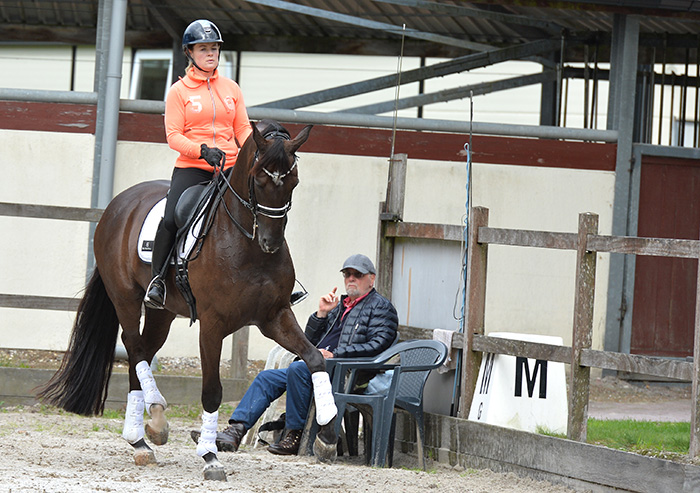
The warm up is as always, a quiet progression as Jen canters around the outdoor arena.
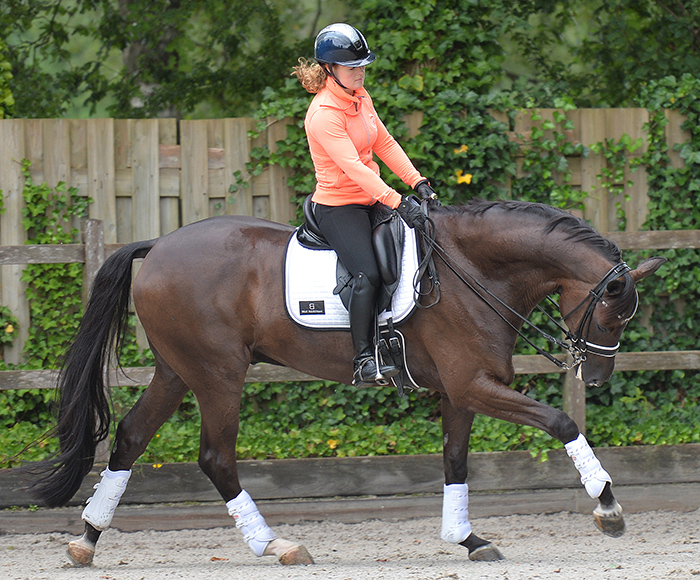
Johan comments on the photo:
There is a lot of bending through the whole body, there is a real contact and behind the saddle, there is an uphill tendency. He is stretching his left hind leg optimally. He should be a little bit more forward with his nose, but it is good on the reins, you can see the muscles in the topline of the neck, they are working, stretching.
story continues below the advertisement
“Change the tempo, but come out of it not so quick, it is important to keep the balance in the change of tempo. Give a little more the reins, then collect a little – but only collect when he is supple in the neck. Change the tempo, more balance, more impulsion…”
Jennifer has the gelding in a slow, slow canter, leading on to a beautiful half pirouette…
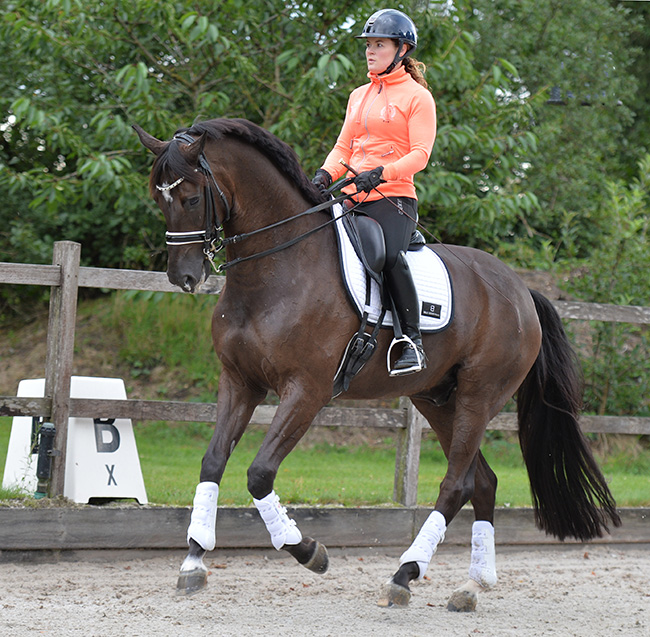
Johan comments:
I like this very much, because in this picture he is carrying the weight on the right hind leg. The canter is three beat, he is landing on the outside hind leg, then outside diagonal and then inside front leg, the three beats. And in this picture you see that the inside hind leg is two or three centimetres first on the ground, before the outside front leg. That’s the reason that the diagonal is broken a little bit, two or three centimetres – that’s the reason that the horse is up in the wither. You see it also here, the horse is five to ten centimetres higher in the wither than in the croup. In this moment the horse is carrying much weight on his hind legs and then the diagonal is a little bit broken by placing his inside hind leg first by two or three centimetres. Often we see horses, even in the Grand Prix, they are landing first on their outside front leg of the diagonal pair and then on their inside hind leg of the diagonal pair, then we have a horse short in the neck, down in the wither, and that is why the horse is landing on the outside front leg first, and that is wrong! But this is a very nice picture, you can see it in his ears and his eyes and in the mouth. It could be a little bit more up in the neck, a little bit – but there is a real contact, smooth contact, and in the body, the wither is higher than the croup. You see it also in the legs.
“Good, but between the collection, let the neck fall down – longer, deeper, longer your reins, let him stretch a little more.”
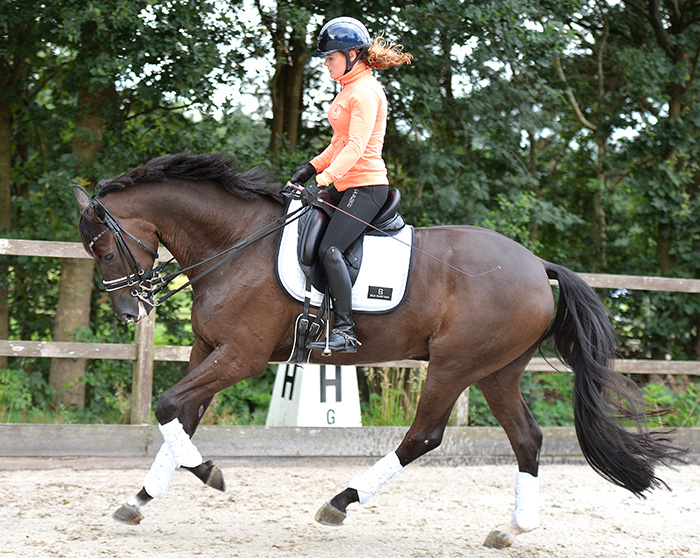
Johan comments:
That’s a good picture, that’s a picture where the whole neck falls down, he stretches and uses his back muscles. It’s logical, the hind legs are connected with the muscles from the hock to the loins, to the back, to the wither, to the neck, to the ears. There are groups of muscles, but the hind leg is indirectly connected behind the ears. When there is one muscle that doesn’t work, or works wrong, then the hind leg cannot do its work, it is so simple. Why is this a nice picture? Because you can see that his inside hind leg is carrying more weight because that pastern is horizontal and his left hind leg is 45 degrees. That’s the reason you bring the neck in this position because you give more freedom to the hind legs to carry more weight at different phases of the canter, and all the muscles of the top line are being used in the right way.
It’s an interesting way of putting it – ‘let the neck fall down, don’t pull it down, create a situation in which the horse wants to let go his body and relax his neck…
“Take your time that your horse is more relaxed, then he can really collect.”
And as he collects, he comes up into a different outline: “Keep the poll the highest point, keep the poll in front of you, bend, then soft on the inside rein.”
Then it is back to the relaxing work…
“Let the neck down, work on making him more supple on the top line.”
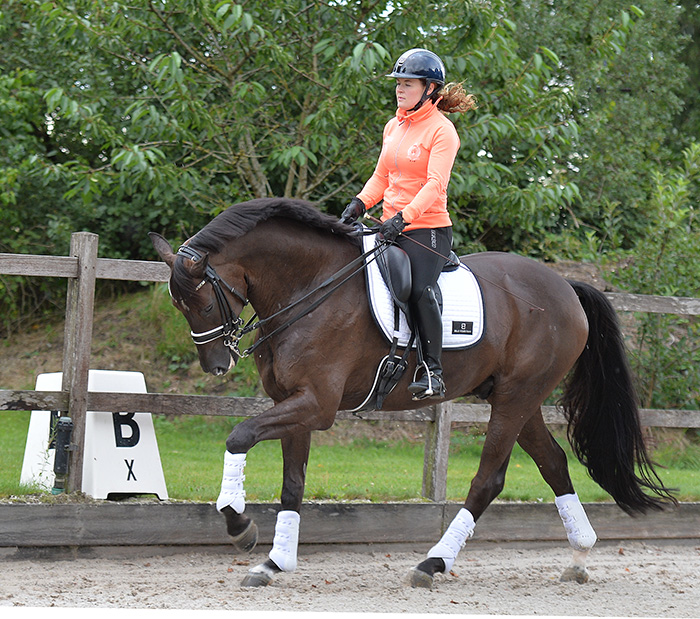
Johan comments:
It’s very important when you are cantering on the left, that your horse is bending a little to the left because his inside hind leg goes more forward than his outside hind leg, that is the reason the horse is bending a little to the inside. But if you are cantering left, and only bending left, then they lose a little impulsion on the outside shoulder – then you make your horse straight, or ask a little bit on your outside rein, then you bring more control of the shoulder, to bring the shoulder a little more to the inside and that’s what you need when you make flying changes.
When you make a flying change, you have to bring the shoulder to the left for the flying change to the right, you have to bring the shoulder to the right, for the flying change to the left. That is why we make a little bit of an outside bend, only a little bit behind the jaw, the cheek, only that, and that is enough to give more control of the outside shoulder and that brings the horse more in a vertical balance – otherwise, when you are cantering, the horse is falling out through the shoulder. Here, you pick up the right shoulder and place it in line with the hips.
And back to some more collected work…
“On the outside rein, soft on the inside rein, small tempo changes, but keep the horse in front of you. We must keep the forward tendency even in the collection.”
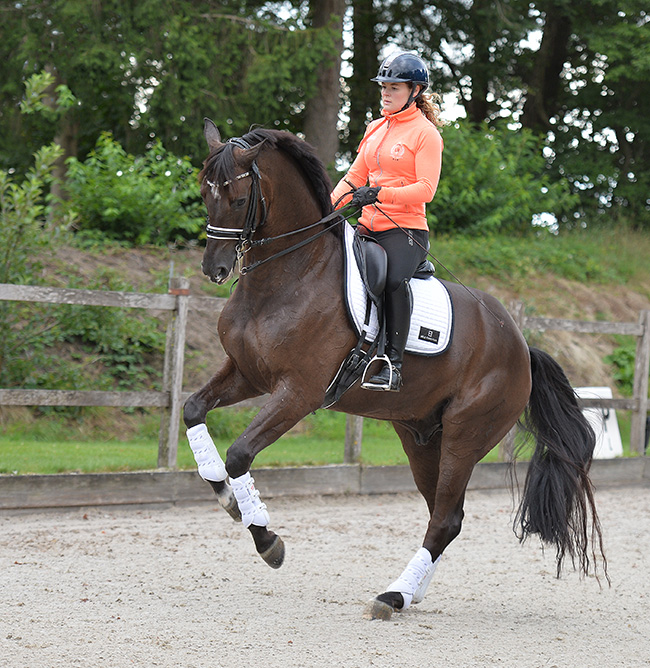
Jen rides another half pirouette:
“There, there, that is the balance. Let him wait…”
The pirouette is wonderful.
“Give the rein, ask for a more relaxed topline, let him use his legs under the body in a better, more forward, way.”
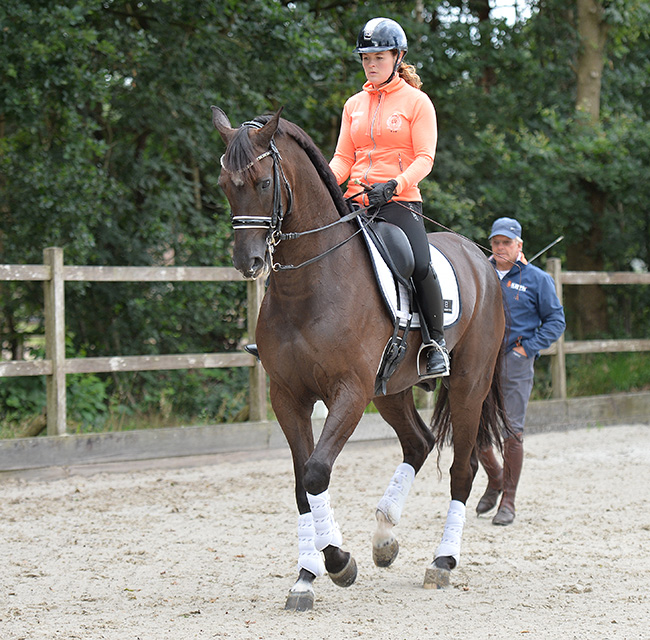
Time for a walk. Time for Johan to pick up the long whip. Not that he actually touches the horse with it as he walks behind, crooning, brave, brave… And the short steps come.
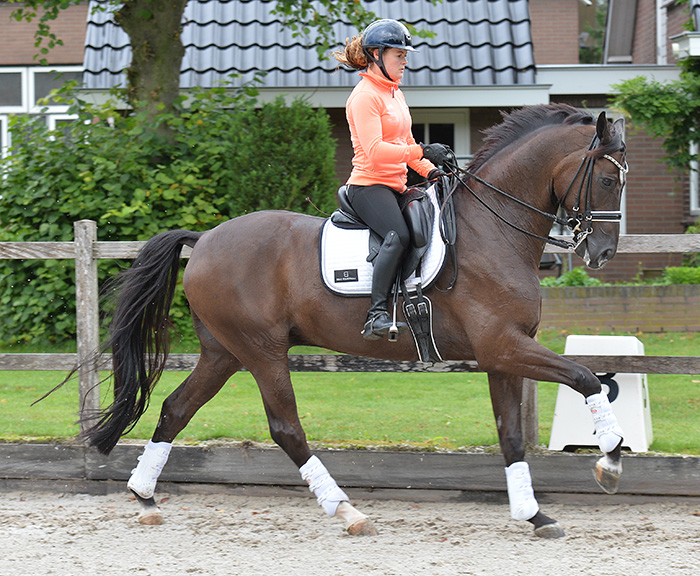
Into canter, it’s a super big canter, the frame is perfect now.
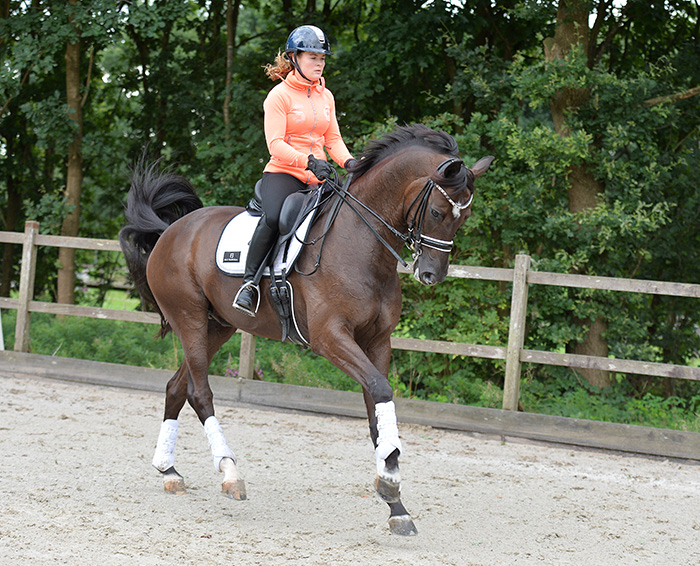
“Make the changes up and forward, in training take a little risk, up and forward, bigger.”
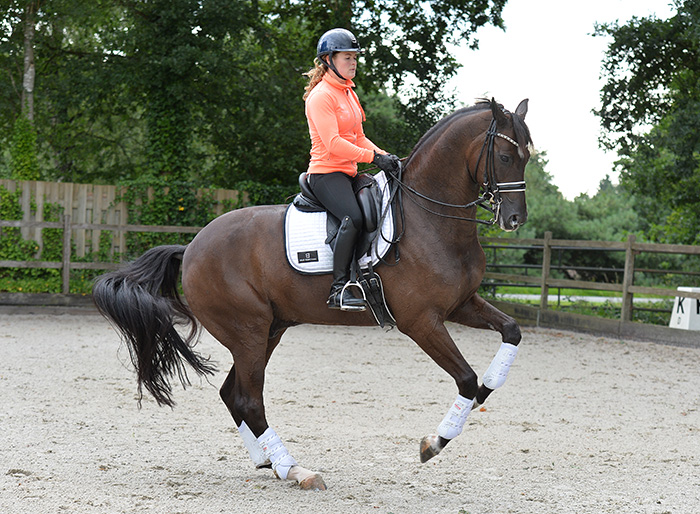
In the pirouette, Jen is asked to keep the horse more on the diagonal: “The first strides were too sideways, keep your diagonal..”
“That’s good, more fluent. In the first one, you wanted to collect too much and lost the rhythm. That is enough for today.”
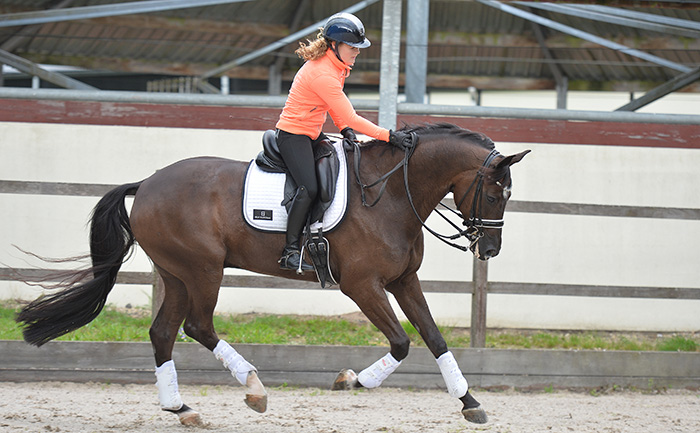
Johan comments:
Moments of relaxation are very important. This is a nice moment, Jen is a little in a forward seat, the Italian d’Inzeo light seat – the horse is in balance, it’s on the outside rein, giving with the inside rein. He is relaxed, he’s looking forward. When you give relaxation to a horse, some riders are thinking when we give the reins as long as possible, then there is relaxation and the horse is better in the back muscles, better through the whole body – that’s wrong! When you sit on the horse’s back there has to be always, a small contact. Even with long reins there has to be a small contact – you bring the head and neck position down, there has to be small contact and you have to take care of the rhythm, you have to take care of the tempo. You need the contact because when the rhythm becomes higher and higher and the tempo becomes higher and higher, the it is like a wheel barrow rushing down a hill. When you give relaxation the horse still has to be in balance, and develop a small impulsion so that the rhythm can be low, that the tempo can be low, and there is a real control of tempo and rhythm with your rein, that’s very important. But often you see riders just throw away the reins, and the horse is falling down on his front legs and going faster and faster. That’s not what you want.
Some people have the idea that it is never correct, never classical, for the horse’s nose to go behind the vertical – but you obviously don’t believe this…
“It is better to keep the nose more on the vertical, then there is less chance that you make big mistakes. But if the nose comes five centimetres behind the vertical and there is a real contact and there is a real forward in the horse, and he is using his hindlegs and his body well – then there is no problem. But behind the vertical with too much pulling on the reins, then it is a big disaster.”
You always say to Jen, Let the neck fall down – fall down, not pulled down?
“When the horse is really forward, when the horse is really listening to your legs, when the horse accepts the bit and accepts the contact, then when you give a little bit more rein, the horse falls down with his neck, so much as your hands go forward. When the neck falls down from out of the wither, then you have more muscles at work in the back, and in the loins. But when the neck comes up from out of the wither and there is a bend in the 3rd, 4th, 5th vertebrae, then it is not good. We want the horse to fall down in the neck, completely, and out of the wither, and then you see a topline which is horizontal, and that’s what you want – so he uses his neck, out of the wither, in a forward direction, then he can swing / wave in his back muscles and in the loins.”
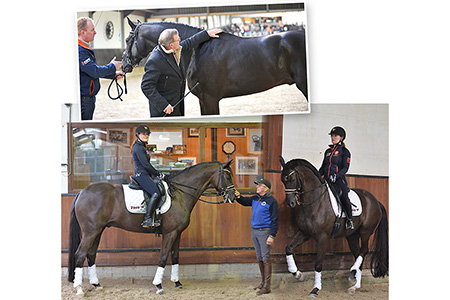
San Siro is by San Amour – if you would like to breed a foal by San Amour, he is available from International Horse Breeders
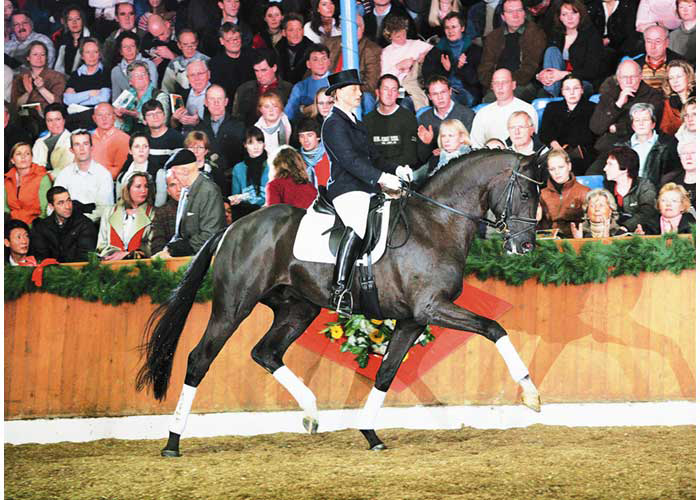
San Amour – you can breed to him with frozen semen from IHB



